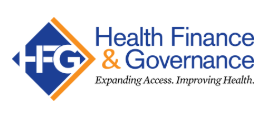
Health Finance and Governance project helping to improve understanding of national funding and spending on healthHealth Accounts play an important role in a country’s health policy and future decision making for health expenditures.
Guyana has achieved significant progress in funding the national response to HIV but faces challenges related to scaling up of Treat All in an environment of declining donor funding. The USAID-funded Health Finance and Governance (HFG) project, in collaboration with PAHO/WHO, has supported a National Health Accounts (NHA) estimation exercise in Guyana to improve understanding of national funding and spending on health. A National Health Accounts dissemination meeting was held in Georgetown on 3 August, at which it was revealed that the Government’s share of HIV spending increased from 25 percent in 2015 to 64 percent in 2016, indicating increasing domestic resource mobilization for HIV.
Guyana’s Health Accounts will play an important role in the country’s health policy and future decision making for health expenditures. Ms. Julia Henn, Director of Health and HIV/AIDS Office, USAID/Eastern and Southern Caribbean, described the National Health Accounts as a “goldmine of information for policymakers.” One key recommendation is for Guyana to better leverage the private sector in order to diversify domestic funding sources for health and HIV. According to Mr. Tesfaye Dereje, Senior Health Finance Specialist of the HFG project, “Guyana is off to a great start.”
WHAT IS PANCAP?
PANCAP is a Caribbean regional partnership of governments, regional civil society organisations, regional institutions and organisations, bilateral and multilateral agencies and contributing donor partners established on 14 February 2001. PANCAP provides a structured and unified approach to the Caribbean’s response to the HIV epidemic, and coordinates the response through the Caribbean Regional Strategic Framework on HIV and AIDS to maximise efficient use of resources and increase impact, mobilise resources and build the capacity of partners.
What are the Global AIDS Strategy 2021–2026 targets and commitments?
If targets and commitments in the strategy are achieved:
- The number of people who newly acquire HIV will decrease from 1.7 million in 2019 to less than 370 000 by 2025
- The number of people dying from AIDS-related illnesses will decrease from 690 000 in 2019 to less than 250 000 in 2025.
- The goal of eliminating new HIV infections among children will see the number of new HIV infections drop from 150,000 in 2019 to less than 22,000 in 2025.
What are the 95-95-95 Targets for ending AIDS?
- 95% of People Living with HIV know their HIV status;
- 95% of people who know their status on treatment; and
- 95% of people on treatment with suppressed viral loads.
HELPFUL LINKS:
Global AIDS Strategy 2021–2026, End Inequalities, End AIDS
https://pancap.org/pancap-documents/global-aids-strategy-2021-2026-end-inequalities-end-aids/
Caribbean Regional Strategic Framework on HIV and AIDS (CRSF) 2019-2025
https://pancap.org/pancap-documents/caribbean-regional-strategic-framework-2019-2025/
